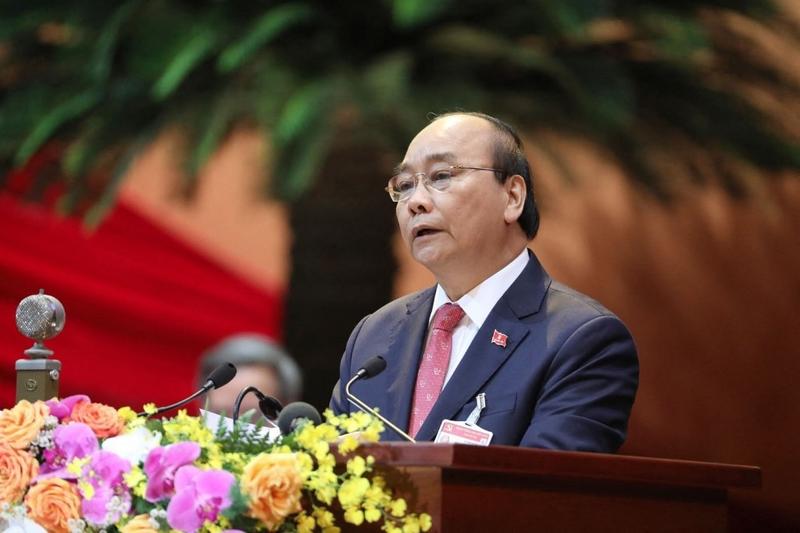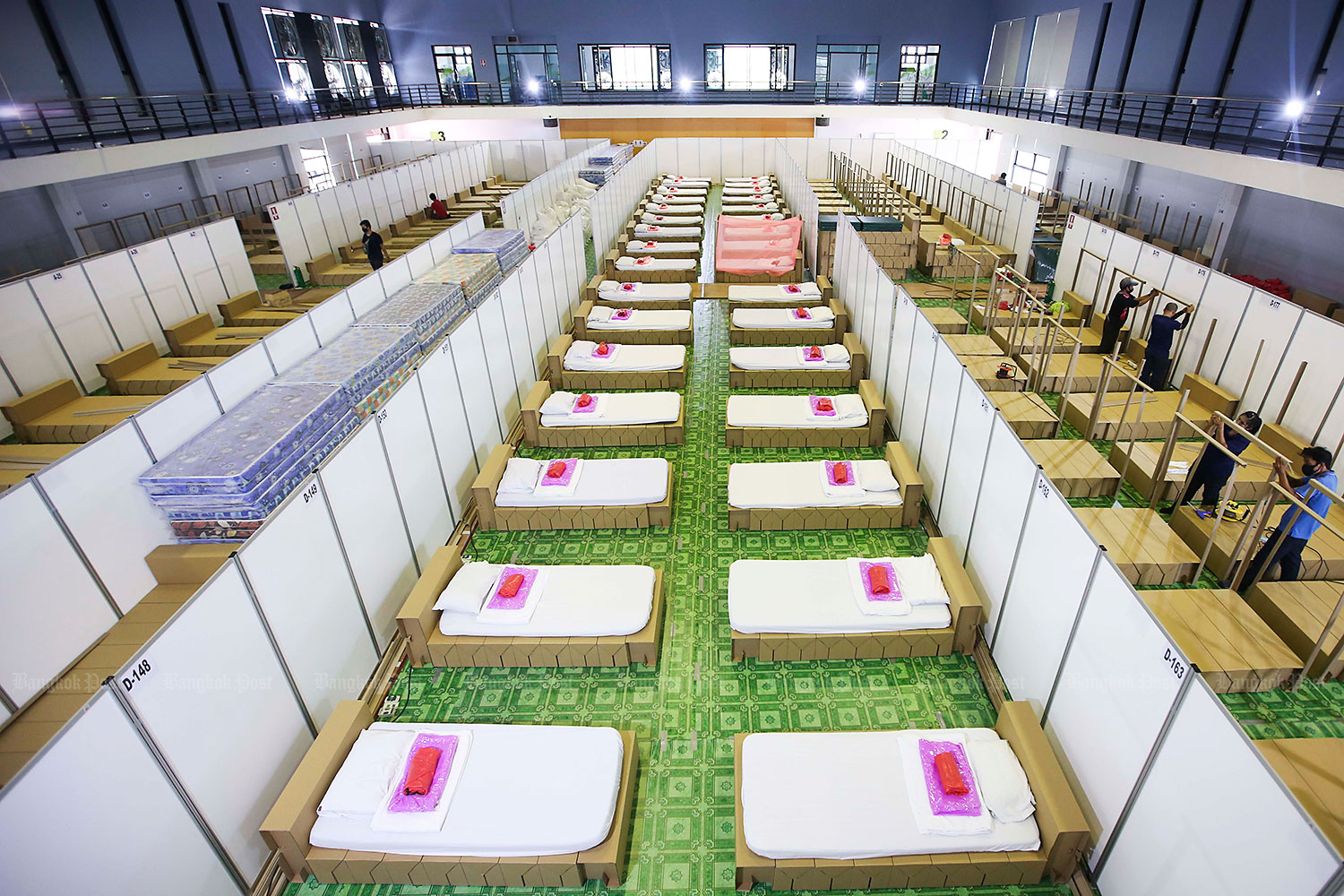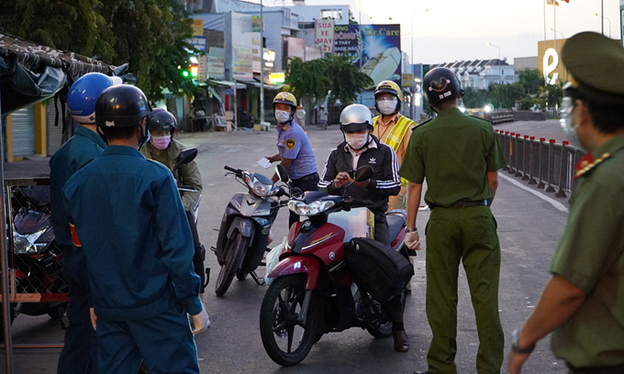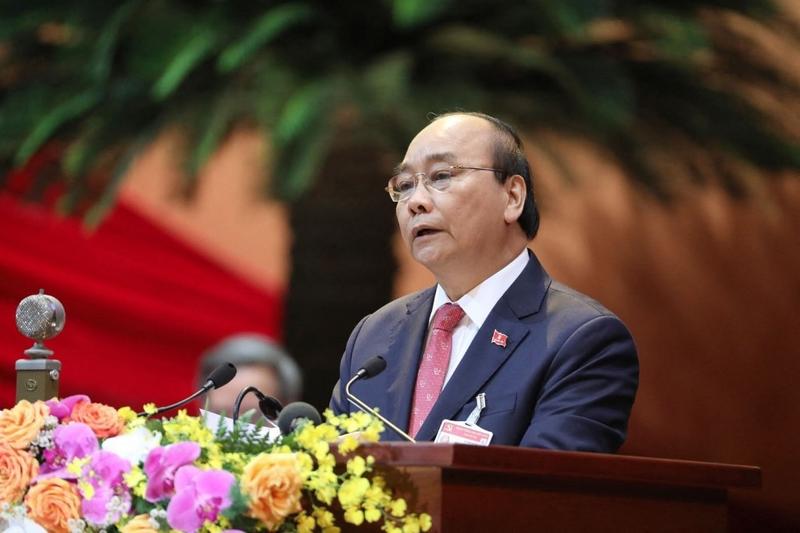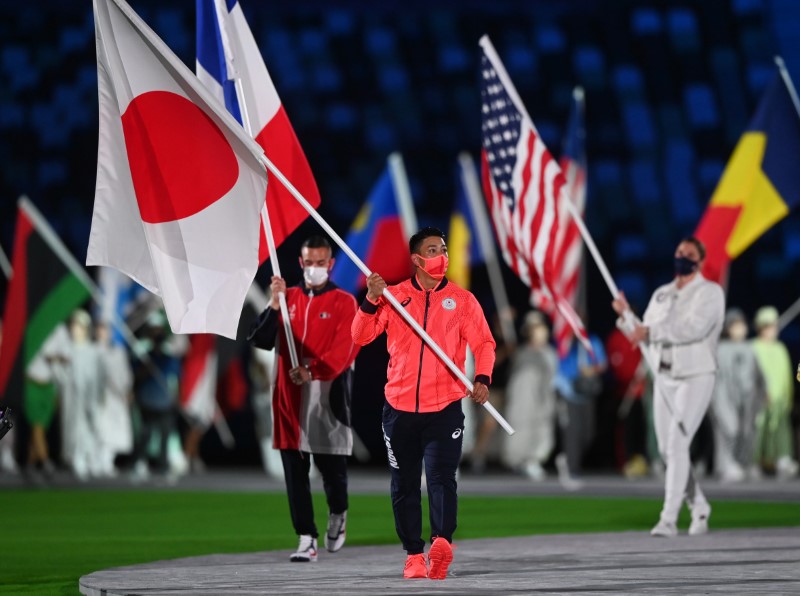-
Posts
2,719 -
Joined
-
Last visited
Content Type
Profiles
Forums
Downloads
Everything posted by ASEAN NOW News
-
file photo With many countries suffering from the new Delta variant, thousands of OFW Filipinos are still stuck overseas, many now with no means to earn a living. Despite cases of the highly infectious Delta variant of the coronavirus, President Rodrigo Duterte has not changed his stance about allowing Filipinos to return home. Cabinet Secretary Karlo Nograles said Duterte continues to push for the unimpeded return of all Filipinos. Based on the results of the 2019 Survey on Overseas Filipinos, the number of Overseas Filipino Workers (OFWs) who worked abroad at any time during the period April to September 2019 was estimated at 2.2 million. According to the National Disaster Risk Reduction Management Council, by the end of August 2020, there were more than 389,000 returning overseas Filipinos, around 60% of whom are land-based workers coming from badly hit industries such as logistics, construction, and the oil sector, while the rest are sea-based. Apparently as of April 2021, there were about 639,000 displaced OFWs. OFW is a term often used to refer to Filipino migrant workers, people with Filipino citizenship who reside in another country for a limited period of employment. The USA is the most common destination country for OFW’s, receiving 36% of Filipino emigrants in 2015. Other destination countries in order of their share of Filipino emigrants in 2015 include the United Arab Emirates, Canada, Saudi Arabia, Australia, Japan and Kuwait. Domestics, Seafarers and Entertainers Stuck Entertainers popular in Japan Domestic work was the top occupation for new hires, at 38 percent. While the demand for domestic workers has long been the main driver of female migration from the Philippines and Asia in general, until 2005, the demand for entertainers, mostly in Japan, also fueled this migration. The Philippines is now also the world’s largest source of seafarers, where an estimated 700,000 seamen are deployed in domestic and foreign-flagged seagoing vessels according to the Maritime Industry Authority, 2020. Approximately 380,000 Filipino mariners make up a quarter of all global merchant shipping crews, while a third of all global cruise ships are staffed by Filipinos. Shipping has screeched to a halt due to restricted trade and the drop in oil prices due to the pandemic. While thousands of sea based OFWs have returned home, many more are stranded in ships with lapsed contracts. While many OFWs in the health sector are hospital frontliners in the US, UK, Europe, and the Middle East, others who returned home to the Philippines find themselves unemployed and stranded outside domestic airports, at the height of one of the longest and most stringent COVID-19 lockdowns in the world. Economic saviours? Since the 1980s, OFWs have been hailed as bagong bayani (modern-day heroes) for keeping the Philippine economy afloat through remittances, which in 2019 reached USD 30 billion (PHP 1.56 trillion), or about 8% of the Philippines' USD 377 billion (PHP 19.52 trillion) economy. Although many OFW’s are currently unable to work, there is some good news as remittances from overseas Filipinos (OFs) saw double-digit growth in May, as coronavirus restrictions eased, and more jobs came back worldwide. The remittances were mostly from the United States, South Korea, Singapore, and Canada, where work contracts have been renewed or are continuing. The Bangko Sentral ng Pilipinas on Tuesday, July 13, said money transfers coursed through banks grew 13.1% to $2.38 billion in May 2021 from $2.106 billion in May 2020. Meanwhile, personal remittances or transfers sent in cash or in-kind through informal channels rose 13.3% to $2.65 billion from $2.34 billion a year ago. Both land- and sea-based workers remitted more cash during the period. On a year-to-date basis or from January to May, remittances grew 6.3% to $12.28 billion from $11.55 billion during the same period in 2020. Back in 2019 much of the remittances from overseas Filipinos were in the form of cash that were coursed through banks. Total cash remittances in 2019 amounted to an all-time high of $30.1 billion, 4.1-percent higher than the $28.9 billion recorded in 2018. Move forward to last year cash remittances from Filipinos working overseas dropped 0.8% to $29.9 billion last year, defying expectations of a sharper fall due to the pandemic. Pundits expect the 2021 remittances to face a further drop, however as some countries start to recover, OFW’s in those countries should continue to send funds back home. Future Prospects? The prospects for returning OFs are not any better at home. During the first few weeks of community quarantine, 3 million left the labor force and an additional 5 million became unemployed based on the April 2020 Labor Force Survey. As the community quarantine has dragged on and now with the Delta variant , its economic impact is getting worse. Preparing for the influx of LSIs is just one of the multitude of responsibilities that local governments now carry in relation to the COVID-19 pandemic. Even the poorest rural localities now must allocate resources for isolation facilities in case repatriated LSIs test positive for COVID-19. The magnitude of the local and international repatriation and reintegration problem coupled with staggering local unemployment, requires resources for social services, livelihood, and employment support that not all local government units possess. So, what can be done for OFs whose remittances and service has kept the country’s economy afloat even in times of crises? The logic is simple–it is time for the Philippine government to return the favour by keeping OFs and their families alive and safe during this pandemic. The first thing that should be done is to ensure the safe return of OFs who need to go home. The Department of Foreign Affairs, through the Office of the Undersecretary for Migrant Workers’ Affairs, facilitates the repatriation of 150 distressed Filipinos from Bangladesh on July 15, 2021. The returnees received USD200 reintegration assistance on top of free plane fares, quarantine facility stay, and Covid-19 testing. (Photo courtesy of DFA) The government must scale-up this returning OFs program to absorb the sudden increase in the number of OFs that would need emergency repatriation. The current USD 103 million (PhP 5 billion) might not be enough to provide for the 600,000 affected OFs. Upon their return to the Philippines, there must be a seamless process for testing and quarantine and the government must ensure the repatriated OFs will not incur any out of pocket expense. Social protection packages must be put in place for OFs and their families while they are being linked to livelihood and employment opportunities. Immediate social assistance will not be difficult to implement since the OWWA would have a database of repatriated OFs, which can easily be matched with other government databases for various financial assistance programs. Majority of the displaced OFs perform elementary or low-skilled jobs in the tourism, construction, oil, and logistics industries, the very same industries heavily hit by the recession. However, it should be noted that the welfare services offered by the government through OWWA is only a stop-gap measure to the more pressing problems of unemployment and financial vulnerability among OFs. Both local and national governments must therefore work together to develop and implement a comprehensive program that would create employment opportunities for displaced OFs. In the face of continued restrictions as the Philippines struggles to contain the virus, the onus will be on local governments, together with the private sector, to serve as catalysts for economic activity in their respective localities. Repatriated OF’s will investigate their localities for opportunities or kick-start businesses there on their own. Directly, local governments can shore up demand for goods and services. Several LGUs have already started doing this by purchasing agricultural produce and entering service contracts with transportation providers. In the absence of publicly funded safety nets, the burden of survival is carried by neighbours, friends, family, and fellow Filipinos through various mutual aid arrangements. Adhering to the principle of Bayanihan (collective effort), it is often support and direct assistance from individuals and the private sector which keeps OFs and their families afloat, along with the millions who have lost their jobs. For example, a group of OFWs began a relief initiative for other OFWs in Dubai who lost their jobs or have exhausted their resources by giving food aid and emergency assistance. Similar efforts were seen across other countries with OFW communities. Global evidence points to how any hope of economic recovery is hinged on how well the Philippine government can address the health crisis. Nevertheless, it is clear that the pandemic is forcing local public and private actors to creatively piece together long-overdue reforms to create and sustain local jobs, and support families now battling multiple rounds of economic displacement. The old romanticised rhetoric of OFWs as long-suffering heroes is no longer tenable–this time, it is the old saviours that need saving.
-
A 16-seat vehicle belonging to Phương Trang Bus company has now been converted to support the transport of Covid-19 patients. Photo: vnexpress.net HCM CITY— About 500 taxis and buses in HCM City have been converted to ambulances to help transport COVID-19 patients to hospitals in time. Since mid-July, all ambulances at public and private medical facilities in the city have been used to transport emergency COVID-19 patients. But the number has been insufficient. Mai Linh Group has provided 200 taxis to the 115 Emergency Aid Centre. Eighty of them are equipped with medical oxygen cylinders, ventilators, rapid tests, and medical staff accompanying the driver. According to a representative of Mai Linh Group, 120 taxis are waiting to be supplied with medical equipment and be put into use. Drivers get vaccinations The drivers of these vehicles will stay in hospitals and medical facilities and have already received one or two vaccinations. In addition, Phương Trang Bus Joint Stock Company has provided more than 200 vehicles with 16-seat each. It has also converted them into ambulances to support localities carrying F0 cases and serious cases to hospitals. All passenger seats were removed to make way for the medical equipment. Drivers must strictly follow the 5K message, be equipped with protective gear, and have medical training. Previously, the company gave 250 cars to transport medical staff to take samples to quarantine areas and field hospitals. The Saigon Bus Joint Stock Company has gathered 40 vehicles with 10 to 45 seats to support the health sector. In May last year, this unit mobilized 30 vehicles to transport patients to quarantine areas. Trương Quốc Huy, executive vice president of SaigonBus, said the 115 Emergency Aid Centre arranges schedules and pick-up locations with the company every day. Medical units in the district can contact the company, which will dispatch vehicles as required. Dr. Nguyễn Duy Long, director of the centre, said that thanks to the support of transport companies the city’s health sector has increased its capacity to treat patients. According to Long, the city has set up five field hospitals located in districts 12, 11, Bình Tân, Bình Chánh and Thủ Đức districts. Each hospital has 20 ambulances with 280 medical staff and professionals. The converted vehicles belonging to Phương Trang and Mai Linh units also operate at these hospitals. While there is a great need for more transport to easy the pandemic, at least it is giving many taxi and bus drivers a chance to do some good for their communities while earning a wage.
-
Vinhomes Imperial Hải Phòng. Shares of Vinhomes dropped 0.9 per cent on Wednesday. — VNA/VNS Photo Danh Lam Shares tumbled on Wednesday after a two-day increase, but liquidity soared to the highest level in the past month, demonstrating the re-ignited interest of investors in the stock market since it bottomed out in July. On the HCM Stock Exchange, the VN-Index fell by 0.34 per cent to close the day at 1,357.79 points. On the Hanoi Stock Exchange, the HNX-Index edged down 0.19 per cent to end at 334.44 points. However, both stock indices increased in the last two sessions. Liquidity improved with 956 million shares worth a total VNĐ29.8 trillion (US$1.3 billion) traded in the two markets, up 9 per cent in volume and 11 per cent in value compared to the previous session. Particularly, the trading value on HCM City’s bourse reached the highest since July 12 when the VN-Index dropped to its bottom of 1,296 points. “The mixed ups-and-downs after the VN-Index went up for nine consecutive sessions is a normal movement. The positive point is the market liquidity is improving gradually, indicating that the money is coming back,” market analysts wrote on vietstock.vn. Realty shares were the drag on Wednesday when heavyweight shares such as Vingroup (VIC), Novaland Investment (NVL) and Vinhomes (VHM) slumped. VIC led the losers with a drop of 1.8 per cent. VHM decreased 0.9 per cent and NVL fell 0.7 per cent. On the other end of the spectrum, banks continued to sustain the market. Vietcombank (VCB), VPBank (VPB) and TienPhongBank (TPB) were among the top 5 shares contributing to the VN-Index growth. VCB was up 1.5 per cent; VPBank (VPB) up 1.2 per cent and TienPhongBank (TPB) up 2.8 per cent. However, from the perspective of the whole banking industry, divergence still took place. Decliners included big names such as BIDV (BID), Vietinbank (CTG), Asia Commercial Bank (ACB) and Ho Chi Minh Development Bank (HDB). Fifteen of the 25 sectors tracked by vietstock.vn declined and 10 advanced. Small-cap industries such as transportation and warehousing and households were in a fever with many shares climbing to or near the ceiling. “With the above trend, the VN-Index is expected to continue moving in the range of 1,350-1,380 points,” said analysts at BIDV Securities Co in their daily report. Many foreign investors were net sellers on both exchanges, offloading shares worth a total VNĐ760 billion.
-
Hanoi, home to one of the first breweries in Vietnam under French colonial rule back in the late nineteenth century, "is a must-visit beer haven where you can see beer lovers sitting on plastic stools with a pint of bia hoi in hand," U.S.-based Booking.com said in a statement. The survey was conducted among a sample of adults who have traveled for business or leisure in the past 12 months and must be planning to travel in the next 12 months. In total 47,728 respondents across 28 countries and territories were polled. Among Vietnamese beer destinations favored by global travelers, Hanoi is followed by HCMC, Hoi An, Nha Trang and Da Nang. The first brewery in Hanoi opened in the 1890s. After the Hanoi beer brewing factory was set up, beer culture caught on quickly. Bia hoi, roughly translated as fresh beer, is locally brewed and made fresh every day, containing only 3 percent alcohol. Foreign tourists sit at a beer stall in Ta Hien-Luong Ngoc Quyen intersection in Hanoi, 2019. Photo by VnExpress/Giang Huy. According to Booking.com, the intersection of Ta Hien and Luong Ngoc Quyen streets in Hanoi's Old Quarter, dubbed a 'beer hub," is a famous address to enjoy ice-cold glasses of bia hoi on plastic chairs, which has become part of Hanoi culture. The area is home to dozens of bars, restaurants, and street beer stalls, which were often fully packed up until 1-2 a.m. before the pandemic broke out in Vietnam. Most bia hoi joints also serve inexpensive street food like prawns barbecued with chili and salt, clams steamed with lemongrass, or green mango with a prawn-chili-salt dip. A glass of bia hoi, of about 300 milliliters, costs between VND7,000-10,000 ($0.30-0.43), while a bottle or a can of beer can cost anywhere between VND25,000-200,000. Vietnam consumed more than 4.6 billion liters of beer in 2019, an increase of more than 10 percent from 2018. The country spends an average $3.4 billion on alcohol each year, translating to $300 per capita, according to the Ministry of Health. Sipping on a cold beer on a weekend night, alone or with a friend, is a familiar hobby for a generation of young people in Vietnam. Beer, a now-indispensable fact of life in both urban and rural areas, has generated endless discussion. The rise of the local craft beer industry is one example of how Vietnam cannot seem to get enough of the drink. Long History Alfred Hommel established the first brewery in Hanoi in 1890 to quench the thirsts of French soldiers and sell his product to locals. At the time, Vietnamese people were unfamiliar with the drink which was a far cry from the traditional rice wines served in their homes. In 1957, Hommel’s brewery belonged to the state, becoming the official brewery of Hanoi. This formed the basis for today’s Hanoi Beer, Alcohol, Beverage Joint Stock Corporation (HABECO). The Hanoi brewery launched its first locally styled beer in 1960, and it took off from there. In the 1960s, as one walked the streets of Hanoi, it was easy to spot signs advertising Bia Hoi—labeled the cheapest beer in the world—and Bia Ha Noi, with barrels outside shops carrying liters of the drink. But perhaps the most remarkable shift in Vietnamese beer culture has taken place from 2015 to the present day. Craft beer arose and began to grab attention with a fever contagious to domestic and foreign consumers alike. Vietnam’s craft beer scene does not merely represent the reproduction of processes borrowed from the west. Rather, local businesses incorporate unique, native ingredients like tropical fruits and poisonous spices to create flavors that accompany the weather, foods, and customs of the country. And so, the history of beer in Vietnam flows on. With figures predicting the growth momentum of alcohol businesses in our country to continue to spike, it seems there is a creative path waiting for beer aficionados long into the future. So when international travellers eventually return, expect Hanoi to become the new beer captial of SE Asia.
-

Golf was a Mega Winner at Tokyo Olympics 2020
ASEAN NOW News replied to ASEAN NOW News's topic in Golf in Thailand
The Philippines medalists are now milionaires so money is everywhere....I would rather see the best win -
SINGAPORE: Some good news as Singapore's economy grew by 14.7 per cent year-on-year in the second quarter of 2021, faster than the 1.5 per cent growth in the previous quarter, the Ministry of Trade and Industry (MTI) said on Wednesday (Aug 11). According to CNA, the ministry also upgraded the GDP growth forecast for 2021 to 6 to 7 per cent, up from 4 to 6 per cent. This is based on the "better than expected" performance of the Singapore economy in the first half of the year, as well as the latest external and domestic economic developments, MTI said. The 14.7 per cent Q2 figure beat a Reuters poll, which predicted a 14.2 per cent increase. With the COVID-19 situation in Singapore stabilising and the country's vaccination programme on track, "Singapore's economy is expected to continue to see a gradual recovery in the second half of the year, supported in large part by outward-oriented sectors," according to the ministry. The progressive easing of domestic and border restrictions will also play a part in supporting the recovery of Singapore's consumer-facing sectors and alleviate labour shortages in sectors that are reliant on migrant workers, it added. LOW BASE The strong growth in the second quarter was largely due to the "low base" in the same period last year when GDP fell by 13.3 per cent due to the COVID-19 "circuit breaker" and a sharp drop in external demand brought on by the pandemic, said MTI. Considering the GDP performance in the first quarter of 2021, the Singapore economy expanded by 7.7 per cent on a year-on-year basis in the first half of 2021. Sharp improvements across all clusters in the manufacturing sector supported the overall expansion in the April to June period. The sector grew 17.7 per cent year-on-year, with the transport and precision engineering clusters seeing the largest increases in output. The constructor sector, led by an expansion of public and private projects, was also a big growth driver. It expanded 106.2 per cent from the same period last year, a big turnaround from the 23.2 per cent fall in the previous quarter. The wholesale trade sector expanded by 2.9 per cent year-on-year, led by the machinery, equipment, and supplies segment. The retail trade sector expanded by 50.7 per cent, while the transportation and storage sector grew by 20.9 per cent year-on-year. The accommodation sector expanded by 13.2 per cent year-on-year, easing from the 16.3 per cent growth in the preceding quarter. "Growth during the quarter was supported by government and domestic tourism demand, even as weak international visitor arrivals due to travel restrictions continued to weigh on the sector," said MTI. The food and beverage services sector grew by 36.7 per cent year-on-year, supported by an increase in sales volumes at restaurants, cafes, food courts and other eating places and fast food outlets from the low base caused by last year's "circuit breaker". Food caterers, however, continued to be adversely affected by restrictions on large-scale events and gatherings, said MTI. The information and communications sector expanded by 9.6 per cent, while the finance & insurance sector came in at 9.1 per cent year-on-year. The real estate and professional services sectors also grew year-on-year by 25.8 per cent and 9.4 per cent respectively. The administrative and support services sector was the only one to contract year-on-year, shrinking by 1.3 per cent, moderating from the 15.1 per cent contraction in the previous quarter. "Within the sector, the rental & leasing segment shrank as travel restrictions adversely affected the rental and leasing of air transport equipment," MTI said. https___specials-images.forbesimg.com_imageserve_5f3cbdc31d4e49a190a79bec_Singapore-Rich-List-2020-Forbes-Asia_960x0.jpg_fit=scale
-
Vietnam’s Prime Minister Phạm Minh Chính addresses the high-level open debate on “Enhancing Maritime Security – A Case for International Cooperation” of the United Nations Security Council (UNSC), held virtually on August 9. VNA/VNS Photo Dương Giang Prime Minister Phạm Minh Chính made proposals on how to effectively tackle challenges to maritime security while addressing the high-level open debate on “Enhancing Maritime Security – A Case for International Cooperation” of the United Nations Security Council (UNSC), held virtually on August 9. According to Vietnam News, the Prime Minister highlighted the need to increase comprehensive awareness of the significance of seas as well as possible threats to maritime security. It is essential to promote responsibility and political resolve, reinforce trust, build closer and more effective cooperation mechanisms to ensure a maritime environment of peace and stability, and exploit maritime resources sustainably. "Maritime security is a global issue, so it needs a global solution," he continued, suggesting setting up a network of mechanisms and initiatives on regional maritime security to be coordinated by the UN to increase the sharing of information and experience, and take joint actions to cope with common challenges in a timely manner. Policies, laws and behaviors of countries should be in accordance with international law, particularly the 1982 United Nations Convention on the Law of the Sea (1982 UNCLOS), and activities that would complicate the situation and cause tensions should be averted, he said. Vietnam has worked to actively contribute to maintaining an environment of peace and security, as well as the ecology and sustainable development in the region and the world, the PM emphasized. " Vietnam is resolved, together with the Association of Southeast Asian Nations (ASEAN) and China, to seriously, fully and effectively implement the Declaration on the Conduct of Parties in the East Sea (DOC), and negotiate to build a substantive and effective Code of Conduct in the East Sea (COC) in accordance with international law and the 1982 UNCLOS," he said. The Prime Minister’s attendance at the debate was made at the invitation of PM Narendra Modi of India that is holding the UNSC’s rotating Presidency. This is the first-time maritime security has been discussed as an exclusive agenda item at the UNSC. Participants expressed their concern over increasing threats to maritime security and safety, and shared their view on the need to strengthen international cooperation to cope with such challenges, observe international law, especially the 1982 UNCLOS, and promote regional and global initiatives to enhance maritime security. The UNSC adopted a presidential statement calling for stronger regional and international cooperation to address challenges to maritime security and safety, acknowledging the significance of the UNCLOS, calling on the UN and the international community to further support countries to improve their capabilities and share experience in handling threats to maritime security.
-
The Ministry of Health announced that the Vietnamese Covid drug, named Vipdervir, was safe and effective in treating the disease on August 10. According to the Vietnam Times, the ministry also approved clinical research for using the drug on patients at the Central Hospital for Tropical Diseases. Vipdervir is extracted and synthesized from medicinal herbs which are completely available in Vietnam, said Assoc. Prof. & Dr. Le Quang Huan, head of the research team from the Vietnam Academy of Science and Technology (VAST). The drug can prevent the virus from sticking to the host cell, making it impossible to penetrate the host cell, according to the researcher. It can also inhibit the virus from multiplying in the cell, and can activate immune cells so that they recognize, block, and eliminate virions. Evaluation also shows that Vipdervir can inhibit the growth of SARS-CoV-2 concentrations that give positive test results. Regarding its ability to enhance immunity, a proper amount of the drug can stimulate immunity to different degrees. These effects will together support the treatment of Covid-19. Researchers have tested Vipdervir on rabbits and found that the drug is safe and inhibits the growth of H5N1 and SARS-CoV-2 viruses, according to VOV. Prof. Dr. Le Quang Huan, who oversees the drug research, said: "The results of preclinical studies have proven the safety and ability to restrain the development of virus as well as enhance immunity. This is an important scientific basis for us to continue to study the effectiveness of the drug on patients at clinical stage." Further research trails needed According to regulations, Vipdervir drug needs further research and clinical trials before mass use. Huan said the team would try to shorten the clinical trial time, thereby putting the drug into use as soon as possible, considering the current complicated pandemic situation. Currently, the research team is also working on a tablet-making process based on Vietnamese herbs meeting the Pharmacopoeia standards, ensuring timely production. Nguyen Ngo Quang from the Ministry of Health said: "The Ministry of Health hopes that by the end of the year, clinical research will be completed, and the drug will receive authorization to mass-produce. Human testing is expected to be carried out in about 2-3 months, then a mid-term review will be conducted to examine the results." Regarding the upcoming clinical trial phase, Le Quang Huan said that there would be more than 200 Covid-19 patients being treated at the Central Hospital for Tropical Diseases to volunteer for the test. This phase aims to find out the optimal dose of drug used on each Covid patient. Along with Vipdervir, the Institute of Chemistry under the Vietnam Academy of Science and Technology has successfully researched a new method of synthesizing Favipiravir in the laboratory. Unlike much-sought-after Remdesivir, Favipiravir is administered orally and has been approved for use in Italy, Japan, Russia, and some other countries.
-
According to Major General Ha Van Cu, although 60 years have passed since U.S. military started to conduct its chemical warfare in Vietnam on August 10, 1961, the Vietnamese people are still suffering severe consequences of toxic chemicals that U.S. soldiers sprayed on the country. file photo According to statistics reviewed at an international seminar on Agent Orange/dioxin in Hanoi, between 1961 and 1971, the U.S. armed forces used 80 million liters of toxic chemicals, 60% of which contained Agent Orange/dioxin, and over 9,000 tons of CS chemicals, severely poisoning the environment in provinces and cities in Military Regions 4, 5, 7, and 9. These chemicals were sprayed over 26 hamlets, with a total area of 3.06 million hectares (equal to a quarter of the total area of Southern Vietnam), making more than 4.8 million people be exposed to the toxic chemicals. Six decades have passed by, but Bien Hoa, Da Nang, Phu Cat, and A So airports, are still severely contaminated with dioxin, as they were U.S. military's chemical storehouses in wartime. Long-lasting harmful effects General Cu wrote that toxic chemicals' long-lasting harmful effects on people's health and environment were pointed out at different international seminars back in 1993. At these events, scientists affirmed that U.S. military's Agent Orange/dioxin destroyed nature and plants, human's health, causing serious diseases and genetic disorders through fathers or mothers, birth defects, congenital malformation, and cancers, among others. " Many research projects, conducted by the National Committee for the Investigation of Consequences of Toxic Chemicals, National Steering Committee on Overcoming Consequences of Toxic Chemicals, the Chemical Corps, the Vietnam-Russia Tropical Center, the Military Medical University and U.S., Japan and Canadian scientists, have also proven the impacts of Agent Orange/dioxin on the environment and the Vietnamese people.” Cu added that there is an undeniable fact that tens of thousands of former Vietnamese soldiers and their descendants are living with deformities and diseases caused by the chemical's effects. According to him, the Chemical Corps is a vanguard force in conducting surveys and dioxin-contamination remediation projects. Considering the task one of the combat missions of chemical troops in peacetime, the Chemical Corps has over the past time made recommendations to the Party, State and the Ministry of National Defense to issue different policies and projects on overcoming consequences of toxic chemicals. 20 projects to settle post war chemical problems Chemical units have closely cooperated with military and civilian units to study and devise CS and dioxin-remediation techniques. Particularly, since 1996, the Chemical Corps has conducted more than 20 projects on settling post-war toxic chemical consequences in different localities. file photo Together with detoxifying around 150,000 cubic meters of the contaminated soil in Bien Hoa Airport, the force has made technical consultations to accelerate the detoxification of contaminated soil in Phu Cat Airport and supervised the implementation of the technology used for processing dioxin-contaminated soil in Da Nang Airport. These achievements have made significant contributions to national socio-economic development and overall assessment of chemical contamination in localities. In addition, the force's data collected during investigation serve as bases for relevant agencies to outline suitable dioxin remediation projects for different locations. Apart from Vietnam's inner efforts in settling post-war toxic chemicals, the country has cooperated with international organizations in dealing with toxic chemical consequences, Cu added. The Commanding General of the Chemical Corps noted that Vietnam has mobilized its maximum efforts and resources to overcome heavy consequences of war over the past time, but the results have been modest. He said that clearing dioxin-contaminated areas and preventing dioxin from spreading is an urgent and time- and money-consuming mission, requiring the joint effort of agencies, industries, the whole political system and people across the countries with chemical troops as a vanguard force. To complete the mission, he urged participating forces to take both short- and long-term measures, including information dissemination, force building, investment in processing equipment, collaboration with local forces and international cooperation. He affirmed that dissemination of higher levels' guidelines and policies on overcoming post-war toxic chemical consequences should be promoted, to raise officers' and soldiers' awareness of the importance of the settlement of AO/dioxin in national building and development. He also emphasized the need to build competent human resource and upgrade new technical equipment to raise the quality and effectiveness of dioxin detoxification in the coming time. Beach warfare. file photo Major General Ha Van Cu stressed that detoxifying dioxin-contaminated land is a difficult and money-consuming mission, so the chemical force should accelerate studying, developing and mastering new processing technologies for dioxin contamination to both save money and soon free remaining hotspots from dioxin contamination in Vietnam. He added that as a vanguard force in the mission, the Chemical Corps should foster information dissemination and close coordination with agencies, sectors, forces, local authorities, and international organizations to successfully fulfill assigned missions. Concluding his article, the commanding general of the Chemical Corps encouraged the chemical force to take advantage of financial resources, update itself with new technologies, and seek technical transfer from countries with scientific advances and technologies in order to choose appropriate technological solutions to the treatment of Agent Orange/dioxin-contaminated "hotspots" in Vietnam. It is rather ironic and very sad that while tourists flock to the war museums in HCMC, and see for themselves the horrible consequences caused by chemical warfare, close by the beaches of Vietnam the issue is still unresolved.
-
The Vietnam Health Ministry confirmed 9,684 new Covid-19 cases Sunday, the highest number recorded on a single day to date. Sunday's tally is the highest daily number ever recorded in Vietnam, followed by 9,225 on July 24. This has resulted in many international manufacturers like Nike and Adidas being forced to close factories as infections rise. file photo A record surge of Covid-19 infections has forced factories to shut in southern Vietnam, hitting one of the world’s busiest manufacturing centres for clothing and footwear and sending global brands looking for back-up suppliers. The supply chain disruption is a massive blow to a country that had largely tamed local transmissions of the virus in 2020. Vietnam was one of few Asian economies that grew and attracted new foreign investment last year despite the pandemic. Now with record cases across the country, the government is imposing even stricter social distancing rules. This has now included regulations on worker transport and housing, and the deployment of staff on factory floors. Two big footwear suppliers — Taiwan’s Pou Chen, which makes shoes for Adidas and Nike, and South Korea’s Changshin, which also supplies the US company — suspended operations last month. Pou Chen is largest supplier in the country, and management said the plant planned to stay closed until at least August 9. However, with weekend rates reaching record highs, reopening of many factories across Vietnam is likely to be delayed even further. Supply chain constraints Adidas warned last week that supply chain constraints could cost it as much as €500m in sales by the end of the year. Feng Tay, another Taiwanese sports footwear manufacturer, closed several of its factories last month. The company makes shoes accounting for one-sixth of Nike’s annual sales, according to its website. The Vietnam Textile and Apparel Association recently said that more than 30 cent of the country’s garment and textile factories were closed. A report in state-run Vietnam News quoted the chair of the association as saying the vaccination rate among workers in the industry was “still very low”. Vietnam has been hampered by a stuttering vaccine programme after the government was slow to procure jabs. “With all provinces in Vietnam being hit by Covid, the situation is so unprecedentedly uncertain that buyers have to adopt a Plan B or C, including offshoring production to another country,” said Vu Ngoc Khiem of Global Sources, an ecommerce platform that links Asian suppliers with overseas buyers. Vietnam Premium Samsung, one of Vietnam’s biggest employers, has also suffered disruptions to its smartphone manufacturing over recent months after a critical supplier of injection moulding equipment stopped operations. The issue has been resolved but the tech group’s appliance factories near Ho Chi Minh City are running at about half capacity. Operations are expected to “normalise” this month, the company said. Eurasia Group, the consultancy, said in a research note last week that there were concerns the outbreak in Vietnam “could harm production ahead of peak end-year/holiday season demand”. Vietnam has lured new investments and supply contracts from global electronics, apparel and other companies seeking to diversify their operations away from China, Asia’s premier manufacturing centre, at a time of worsening Sino-US trade tensions. Apart from the problems caused by Covid 19, all SE Asian exporters are also having to cope with the massive jump in freight charges too. Now with brands seeking alternative supply chains, the pandemic could have long lasting repercussions for this SE Asian country.
-
National Treasurer Rosalia de Leon (file photo) MANILA –The demand was strong for the fresh seven-year Treasury bond (T-bond) during the auction on Tuesday, which was partly driven by the report about the economic rebound. The Bureau of the Treasury (BTr) offered the debt paper for PHP35 billion and bids amounted to PHP63.696 billion. The auction committee made a full award. The T-bond fetched a coupon rate of 3.750 percent. “Bids are aligned with secondary levels for this near seven-year issue,” National Treasurer Rosalia de Leon told journalists in a Viber message. The BTr re-offered the debt paper over the tap facility window for PHP10 billion, which was fully awarded. Bids reached PHP21.257 billion. Report about the economic rebound of the domestic economy in the second quarter at 11.8 percent, from five consecutive quarters of contraction, factored in during the auction, de Leon said. “This has been absorbed by (the) market,” she added. (PNA)
-
TUGUEGARAO CITY – As coronavirus disease (Covid-19) patients soared to 194 at the Cagayan Valley Medical Center (CVMC) on Tuesday, hospital officials used additional 50 beds to accommodate more cases. Cagayan Valley Medical Center Dr. Glenn Mathew Baggao, CVMC hospital chief, told the Philippine News Agency in an interview that they also increased their workforce with 100 nurses, doctors, medical technologists, and radiology technicians, and doubled up their ward supplies, ventilators, oxygens and other items. “The trend, as we can see, is still increasing so we are having more workforce to do the jobs,” Baggao said. Unless a tighter quarantine status from the existing general community quarantine is implemented especially in Cagayan, the “uptrend cases will further fill up hospitals primarily CVMC, the regional government hospital,” he said. Baggao said of the current number of patients at CVMC, 163 are confirmed Covid-19 positive while 31 are suspected cases. COVID-19 SURGE. Cases of Covid-19 have ballooned in Cagayan Valley, with patients waiting to be admitted outside the Cagayan Valley Medical Center. Dr. Glenn Mathew Baggao, chief of Cagayan Valley Medical Center, said Tuesday (Aug. 10, 2021) they have beefed up their workforce to be able to attend to more patients. (Photo courtesy of Dr. Glenn Mathew Baggao) Cagayan province accounts for the bulk of CVMC patients with 146 cases, mostly from Tuguegarao City. The other patients are from Isabela, Kalinga and Apayao provinces. “It is so saddening for us as people tend to relax after getting vaccinated. Still, it is not a guarantee that you will be spared from the virus. Much more that the Delta virus is already in the region,” Baggao said. (PNA)
-
MANILA – The Philippines is now asking the Hong Kong government to consider the international vaccination certificate being issued by the Bureau of Quarantine (BOQ) in place of its required "recognized vaccination record," the Department of Foreign Affairs (DFA) said Tuesday night. Foreign Affairs Teodoro Locsin Jr. earlier revealed that Hong Kong is not accepting the country's vaccination cards because "they are not connected to a single source". DFA Assistant Secretary for Strategic Communications Eduardo Meñez was asked if any Filipino has been affected by the policy yet. "Numbers are uncertain, but the Consulate is seeking to get the Philippine BOQ international vaccination certificate so that may be shown by Philippine travelers," he said. The Philippines is currently under Group A Specified Places (high-risk) in Hong Kong's Covid-19 travel advisory, meaning all Filipino travelers will be subject to a 21-day quarantine period. Under this category, all vaccinated individuals are also required to present a negative reverse transcription-polymerase chain reaction (RT-PCR) result conducted within 72 hours before the scheduled time of departure of the aircraft on top of the "recognized vaccination record". The Labor Department previously reported that Hong Kong was set to lift its travel ban on the Philippines on Aug. 9, which would allow more than 3,000 stranded overseas Filipino workers to fly to the former British colony. (PNA)
-
Both the Men’s and Ladies Olympic golf tournaments went down to the wire, with many countries in medal positions up to the last holes. However, it was the massive coverage each round received globally on TV, that put golf up there with all the other sports. I thing one quote sums it all up….if you went out into the street and asked people if they have ever heard of the Masters or The Open, you would get a blank star, but many who were supporting their country's top players at the Olympics including golf now knew who Korda, Ko and many more names were. Indian Golfer made a huge impact During the Olympics, people natuarally supported their country, and a good example is Aditi Ashok the young Indian golfer. Aditi was at the top of the leader board on all four days, and narrowly missed out on a Bronze medal. Ashok centre playing with world No.1 Nelly Korda Ranked 154 on the Rolex World rankings, she plays regularly on the LPGA Tour, but because of the Olympics most of India now knows who Aditi is. She received thousands of messages even from the President and Prime Minister of her country. She was very disappointed to finish 4th, but she has inspired many young Indian girls to take up the sport. CT Pan from Chinese Taipei beat seven players in a play off to grap the Bronze medal, and he became an overnight hero too. Just goes to show, that winning regularly on the PGA, European Tour or the LPGA Tours may fill your bank account, you will always be remembered for representing your country.
-
MANILA – San Miguel Corporation (SMC) president Ramon S. Ang will give Tokyo Olympics medalists, led by the country’s very first gold medal winner Hidilyn Diaz, a total of PHP22 million in incentives for accomplishing the Philippines’ best Olympic performance to date, in 97 years of competing in the foremost international competition. San Miguel Corporation president Ramon S. Ang (File photo) Ang’s “personal gift” or incentive to the winning athletes, as earlier announced by the Philippine Olympic Committee (POC) prior to the Summer Games, will consist of PHP10 million for weightlifter Diaz, PHP5 million each for boxers Carlo Paalam and Nesthy Petecio for winning silver medals, and PHP2 million for boxer Eumir Marcial’s bronze finish. “As a longtime partner and supporter of Philippine sports, I’m so happy for our athletes. All their hard work paid off. They’ve opened the eyes of so many Filipinos sports patrons, fans, and aspiring athletes that indeed, we Filipinos can compete and win against the best in the world in the Olympics. This is just the beginning. We have the momentum. We can only get stronger in the succeeding Olympics,” Ang said in a news release on Monday. “I’m especially grateful to Hidilyn, whom we’ve supported for several years now, for giving honor to the country by winning our very first Olympic gold medal. We can build on these successes to develop stronger sports programs and produce more Olympic winners like Hidilyn, Carlo, Nesthy, and Eumir,” he added. Ang also said the Olympic athletes, as well as their coaches and teams, gave the Philippines more than just medals. “The message of this Olympic campaign for us Filipinos is clear. We are resilient in the face of challenges and we do not back down from adversity. This pandemic is perhaps one of the greatest challenges in our lifetime. Thank you Hidilyn, Carlo, Nesthy, and Eumir for giving us hope and inspiration during this critical time. You showed us that nothing is impossible,” Ang said. Ang added that as the Olympics showcased the outstanding athletic feats that fully-trained athletes are capable of, it also serves as a reminder that people are not limited, and that Filipinos should endeavor to keep fit and healthy in the face of Covid-19 pandemic. “Aside from following health protocols to stop the transmission of the virus and getting vaccinated, we should also do our best to make sure we are mentally and physically fit and healthy during this crisis. I believe that will help us a lot in coping with the stresses of this time,” Ang said. Before the pandemic, SMC consistently supported the country’s participation and hosting of international competitions, including the staging of 2019 Southeast Asian Games. In this SEA Games edition, the Philippines also completed its best performance so far in 42 years of participation with a haul of 149 gold medals, 117 silvers and 121 bronzes. In 2005, SMC also backed the Philippine team that won the overall championship in the 2005 Southeast Asian Games with 112 golds, 85 silvers and 93 bronzes. Ang, through SMC, is also a major supporter of the Philippine Sportswriters Association (PSA) Awards. The PSA, 100-member, 56-year-old association holds the annual awarding ceremony to honor athletes, coaches, officials and organizations that made a significant impact to Philippine sports. SMC’s subsidiary, San Miguel Brewery, Inc., is also a consistent supporter of the Sportswriters Association of Cebu (SAC) Cebu Sports Awards, 37-year-old event that recognizes the accomplishments of Cebuano sports personalities. SMC also owns three professional basketball teams, namely San Miguel Beer, Barangay Ginebra San Miguel, and Magnolia Hotshots Pambansang Manok in the Philippine Basketball Association. (PR)
-
MANILA – President Rodrigo Duterte is considering talking with Congress to discuss giving tax relief to manufacturers of medical grade oxygen. During his pre-recorded Talk to the People aired Monday, Duterte said the country really needs a lot of medical-grade oxygen supply, which he described as a "vital component" amid the Covid-19 pandemic. He also praised the oxygen manufacturers for continuing their production during these trying times. file photo. "We really need many supplies of oxygen. If it really goes out of control, we would need all the oxygen that they can produce for the people,” Duterte said. Duterte noted the importance of having sufficient medical-grade oxygen in the country, particularly now that the threat of the dreaded virus is more alarming. “When the first wave hit us, we had shortages of oxygen. That's why these manufacturers must be given licenses. If everything is in order, give the license right away to manufacturers," he said. Apart from providing them the licenses, Duterte is also eyeing to give the manufacturers a tax relief for their production of medical-grade oxygen. "Maybe, I'll talk to Congress to provide you a tax relief on your manufacturing, for you are producing a very vital component in the fight against the Covid-19 and the Delta variant," he said. Food and Drug Administration Director-General Eric Domingo said there are a total of 81 licensed manufacturers of medical-grade oxygen in the country. (PNA)
-
MANILA – Boxer Eumir Marcial has been promoted to sergeant of the Philippine Air Force (PAF) for winning the Olympic bronze at the Tokyo Games. Eumir Marcial (middle), whose rank was Airman First Class prior to the Olympics, was pinned with the sergeant chevrons by Philippine Air Force commander Lt. Gen. Allen Paredes (right) and Executive Secretary Salvador Medialdea shortly after he arrived from Japan Monday (Aug. 9, 2021). (PAF photo) Marcial, whose rank was Airman First Class prior to the Olympics, was pinned with the sergeant chevrons by PAF commander Lt. Gen. Allen Paredes and Executive Secretary Salvador Medialdea shortly after he arrived from Japan Monday. The boxer who hails from Zamboanga entered the PAF in 2013 and is organic personnel of its Civil Military Operations Group. The boxer was also welcomed by Senator Christopher Lawrence "Bong" Go, chair of the Senate Committee on Sports, and representatives from the Philippine Sports Commission and the Philippine Olympic Committee. As part of safety protocols against Covid-19, Marcial will undergo the mandatory quarantine. Marcial fell to Ukraine’s Oleksandr Khyzhniak who won via split decision at the semi-final round of the men’s middleweight event at the Kokugikan Arena in the Japanese capital. In 2019, Marcial brought home the silver medal in the men's middleweight (75-kg.) category at the AIBA World Boxing Championships in Ekaterinburg, Russia. (PNA)
-
This is his first overseas trip since Vitenam’s President Nguyen Xuan Phuc took office. President Nguyen Xuan Phuc And it is also the first official visit of a Vietnamese senior leader to the Lao People’s Democratic Republic after the visit of Lao Party General Secretary and President Thongloun Sisoulith in June, 2021. As neighboring countries, Vietnam and Laos have a long-standing friendship. The Vietnamese President's visit confirms Vietnam's special attention to promoting the great friendship, special solidarity, and comprehensive cooperation with Laos. The two Parties, States, and peoples have always supported each other during each country's struggle for national liberation and reunification in the past as well as current national construction and defense cause. The relationship has become a development norm and a factor ensuring the success of the revolutionary cause of each country and an asset of the two Parties and peoples. The two sides have always pledged to promote responsibilities in maintaining, protecting, and nurturing their great friendship, special solidarity, and comprehensive cooperation. They are enhancing cooperation in various fields including the basis of independence, equality, and mutual benefits, contributing to peace, stability, and prosperity in the region and the world. Amid the rapid and complicated developments of the regional and global situations, especially the negative impacts of the COVID-19 pandemic, Vietnam and Laos have managed to accelerate the bilateral ties in various sectors such as politics, defense-security, economy, trade, investment, education and training, people-to-people diplomacy, and coordination and mutual support at regional and international forums. President Phuc’s visit in such a context provides a great opportunity for both countries' leaders to discuss measures to foster the bilateral relationship and exchange regional and global matters of mutual concern. The visit was believed to be a success, contributing to further fostering the great friendship, special solidarity, and comprehensive cooperation between the two countries.
-
Businesses are now starting to demonstrate their civic role in joining the fight against the coronavirus pandemic to keep people safe. According to a report by Vietnam News, the HCM City public hospital system is facing overloads due to a surge in infections which reached more than 100,000 in the past 60 days. Meanwhile, people and businesses face problems in food and supply distribution due to the impact of COVID-19. The pandemic also shows the profound connection between social development and businesses. This pandemic reminds businesses to pay close attention to activities that bring value to the community, by taking action and place a reliable label in people's hearts and minds day by day. Space donated for field hospitals In cooperation with the authorities, many businesses voluntarily donated property such as land, buildings, and factories for the construction of field hospitals. Other businesses donated food, medicine, medical equipment, and ambulances to support the frontline forces against the pandemic. Many people also volunteered to help repel this pandemic. Private healthcare providers were among the many that took prompt action in sharing their duty with the medical system in treating COVID-19 patients and alleviate the stress on public hospitals. Hoan My Thu Duc International General Hospital proposed to HCM City Health Department to convert the entire function of the hospital to a COVID-19 treatment centre. After officially announced as a COVID-19 treatment centre, Hoan My Thu Duc COVID-19 treatment hospital has 100 beds in the first phase and the number of beds will be increased to 200 in the second phase. Helping on the frontline were more than 3,000 volunteers including doctors, nurses, and medical staff working at Hoan My system's 15 hospitals and six clinics. This is a campaign organised by Hoan My, called "One Hoan My – Millions of trust" to treat COVID-19 patients in their newly converted hospital. The community has highly appreciated this timely contribution which helps relieve the pressure in this unwanted situation. The board of directors of Hoan My Medical Corporation said: "Hoan My is not an outsider in this battle even though our businesses were impacted greatly by the pandemic. We need to take action to help the medical system overcome those difficulties." Connection and Co-operation From Hoan My's perspective, the core foundation leading to those activities' success is sincerity and resolve in their responsibilities despite hardship. One of the approaches is to promote the connection and co-operation among businesses, between businesses and social organisations, enterprises and the authorities. Ph.D, M.D, Nguyen Tuan, CEO of Hoan My Thu Duc International General Hospital, said: "To finish this construction as soon as possible, we had to rapidly convert the function of Hoan My Thu Duc Hospital into a place that meets the requirements for COVID-19 treatment. All medical equipment needed for treatment was also furnished within a week. Hoan My's doctors, nurses, and medical staff are all willing to join the battle to repel the pandemic with the spirit 'One Hoan My – Millions of trust'. Despite the emerging challenges for us, I believe in our strength and the competence that would help us beat the pandemic. And the happiness will come to us." Nguyen Anh Duc, living in Binh Tan district, said: "The images of doctors, nurses and medical staff suffering from exhaustion after a long day working non-stop has brought a grateful feeling in our hearts. The pandemic has pushed them to the limit of health and endurance. Even then, they still manage and overcome it to keep people safe. They are our heroes in white blouses." HCM City People's Committee Chairman Nguyen Thanh Phong praised the timely support of Hoan My Medical Corporation. He said: "Although several shortcomings occur, the operation of the hospital has gone well, especially in-patient admission. This comes from the high determination and great efforts of Hoan My's doctors and medical staff. The core value of Hoan My has been vividly re-affirmed as "One Hoan My – Millions of trust." The success of Social Responsibility (CSR) and Social Value Sharing (CSV) activities will make a positive impact on society and push the development of the business. Research from Edelman stated that when hit by a crisis, a brand name that focuses on their customers' profit and wel being would never be delayed on the path to success. "So, COVID-19 is considered an opportunity for better development of businesses. Otherwise, those who only pay attention to their own benefits would be boycotted and sink into oblivion permanently", said Chairman Nguyen Thanh Phong.
-
Police officers at a Covid-19 checkpoint stop vehicles in HCMC's Go Vap District, July 26, 2021. Photo by VnExpress/Gia Minh. Supermarket and convenience store employees in HCMC are now exempt from the ongoing nighttime (6 p.m.-6 a.m.) restrictions, authorities said Monday. Nguyen Thanh Phong, Chairman of the municipal People's Committee, announced the decision following a proposal made by the Department of Industry and Trade to let stores have more time to prepare goods and disinfect business sites. The department has been requested to cooperate with relevant authorities to list the employees and update information onto a database. To avoid any checkpoint issues, directors of supermarkets and convenience stores would give their employees approval documents so they can be out on the streets from 6 p.m. to 6 a.m. Ho Chi Minh City has been implementing a social distancing order since July 9. Starting July 26, people must also stay home from 6 p.m. to 6 a.m. the next day, except for certain cases like medical emergencies. On August 3, the city allowed certain postal services to let their vehicles move out at night to minimize disruption of public and essential services. Naturally this exemption alllows the stores to re stock to avoid empty shelves, which could create another wave of panic buying. The southern city has recorded 124,153 local Covid-19 cases since the fourth coronavirus wave hit Vietnam late April and is the current epicenter of the pandemic.
-
NHK the Japanese website has learned that a survey of Japanese businesses operating in Vietnam, shows more than 60 percent of them are considering repatriating their staff, amid a surge in coronavirus infections in the Southeast Asian country. Japanese Factory in Vietnam Authorities in Vietnam have imposed strict anti-infection measures since late April in the southern city of Ho Chi Minh, where Japanese firms are concentrated. The survey conducted by the Japanese Chamber of Commerce and Industry in Ho Chi Minh City asked member firms about their repatriation plans. Four-hundred and seventy-five businesses, or nearly a half of the total, responded. Three-hundred and fourteen firms, or 66 percent of respondents, are considering either temporarily or permanently bringing home their Japanese employees and their families. Around half the staff and their families of the 314 firms are heading to Japan to receive vaccinations, while 30 percent will evacuate. Many respondents expressed concern about the local healthcare system. One said sanitary conditions and medical care are of a lower standard than in Japan, adding that many people also fear being taken away by authorities against their will. Another said their children's lives are at risk. Mizushima Kozo, the head of the Chamber of Commerce and Industry, says many Japanese had chosen to remain in Vietnam to avoid shutting down a key part of the global supply chain. If Covid Worsens Supply Chains will be affected. But he said those people may repatriate if the situation worsens, and this could adversely affect the operations of manufacturers around the world. https://www3.nhk.or.jp/nhkworld/en/news/20210807_10/
-
This is his first overseas trip since President Nguyen Xuan Phuc took office and the first official visit of a Vietnamese senior leader to the Lao People’s Democratic Republic after the visit of Lao Party General Secretary and President Thongloun Sisoulith in June, 2021. President Nguyen Xuan Phuc As neighboring countries, Vietnam and Laos have a long-standing friendship. The Vietnamese President's visit confirms Vietnam's special attention to promoting the great friendship, special solidarity, and comprehensive cooperation with Laos. The two Parties, States, and peoples have always supported each other during each country's struggle for national liberation and reunification in the past as well as current national construction and defense cause. The relationship has become a development norm and a factor ensuring the success of the revolutionary cause of each country and an asset of the two Parties and peoples. The two sides have always pledged to promote responsibilities in maintaining, protecting, and nurturing their great friendship, special solidarity, and comprehensive cooperation. They are enhancing cooperation in various fields including the basis of independence, equality, and mutual benefits, contributing to peace, stability, and prosperity in the region and the world. Amid the rapid and complicated developments of the regional and global situations, especially the negative impacts of the COVID-19 pandemic, Vietnam and Laos have managed to accelerate the bilateral ties in various sectors such as politics, defense-security, economy, trade, investment, education and training, people-to-people diplomacy, and coordination and mutual support at regional and international forums. President Phuc’s visit in such a context provides a great opportunity for both countries' leaders to discuss measures to foster the bilateral relationship and exchange regional and global matters of mutual concern. The visit was believed to be a success, contributing to further fostering the great friendship, special solidarity, and comprehensive cooperation between the two countries.
-

So what did you get out of the 2020 Olympics?
ASEAN NOW News posted a topic in Malaysia General Chat
Now the delayed Olympics have actually finished, many of us are perhaps left with many mixed emotions and reactions across the globe. It was no secret that the Japanese would lose even more by cancelling the games for a second time, so there was a financial incentive to go ahead. However, with the Covid pandemic peeking just as the athletes started to arrive, public sentiment in Japan was firmly saying they should cancel the games. After 17 days of competing, the IOC with the help of the Japanese organizing committee seemed to have pulled off the impossible. The coverage on TV was of course slightly quitter than normal due to lack of spectators, however with fellow competitors, coaches, media, and local volunteers cheering and clapping, it didn’t seem to matter. And with so many new disciplines introduced for the first time, such as Skateboarding and Speed Climbing making compulsive watching, the 2020 games became cool and trendy, and it delivered. Surely the point is to grow the sports, and to encourage youngsters everywhere to put down their mobiles and start participating too. Seeing 13-year old’s winning medals will inspire many kids to follow in their footsteps. That must be a bonus. However, the biggest winners have to be all of us sitting at home watching, many in lock down. But for 17 days competing and enjoying these talented competitors, we were able to watch on TV and for a while Covid was not at the top of the agenda. So, what did you get out of watching the 2020 Olympics? -
Now the delayed Olympics have actually finished, many of us are perhaps left with many mixed emotions and reactions across the globe. It was no secret that the Japanese would lose even more by cancelling the games for a second time, so there was a financial incentive to go ahead. However, with the Covid pandemic peeking just as the athletes started to arrive, public sentiment in Japan was firmly saying they should cancel the games. After 17 days of competing, the IOC with the help of the Japanese organizing committee seemed to have pulled off the impossible. The coverage on TV was of course slightly quieter than normal due to lack of spectators, however with fellow competitors, coaches, media, and local volunteers cheering and clapping, it didn’t seem to matter. And with so many new disciplines introduced for the first time, such as Skateboarding and Speed Climbing making compulsive watching, the 2020 games became cool and trendy, and it delivered. Surely the point is to grow the sports, and to encourage youngsters everywhere to put down their mobiles and start participating too. Seeing 13-year old’s winning medals will inspire many kids to follow in their footsteps. That must be a bonus. However, the biggest winners have to be all of us sitting at home watching, many in lock down. But for 17 days competing and enjoying these talented competitors, we were able to watch on TV and for a while Covid was not at the top of the agenda. So, what did you get out of watching the 2020 Olympics?
-
Now the delayed Olympics have actually finished, many of us are perhaps left with many mixed emotions and reactions across the globe. It was no secret that the Japanese would lose even more by cancelling the games for a second time, so there was a financial incentive to go ahead. However, with the Covid pandemic peeking just as the athletes started to arrive, public sentiment in Japan was firmly saying they should cancel the games. After 17 days of competing, the IOC with the help of the Japanese organizing committee seemed to have pulled off the impossible. The coverage on TV was of course slightly quieter than normal due to lack of spectators, however with fellow competitors, coaches, media, and local volunteers cheering and clapping, it didn’t seem to matter. Philippines winning its first ever gold medal even made the final highlight of the 2020 Olympics last night on BBC TV!!! And with so many new disciplines introduced for the first time, such as Skateboarding and Speed Climbing making compulsive watching, the 2020 games became cool and trendy, and it delivered. Surely the point is to grow the sports, and to encourage youngsters everywhere to put down their mobiles and start participating too. Seeing 13-year old’s winning medals will inspire many kids to follow in their footsteps. That must be a bonus. However, the biggest winners have to be all of us sitting at home watching, many in lock down. But for 17 days competing and enjoying these talented competitors, we were able to watch on TV and for a while Covid was not at the top of the agenda. So, what did you get out of watching the 2020 Olympics?


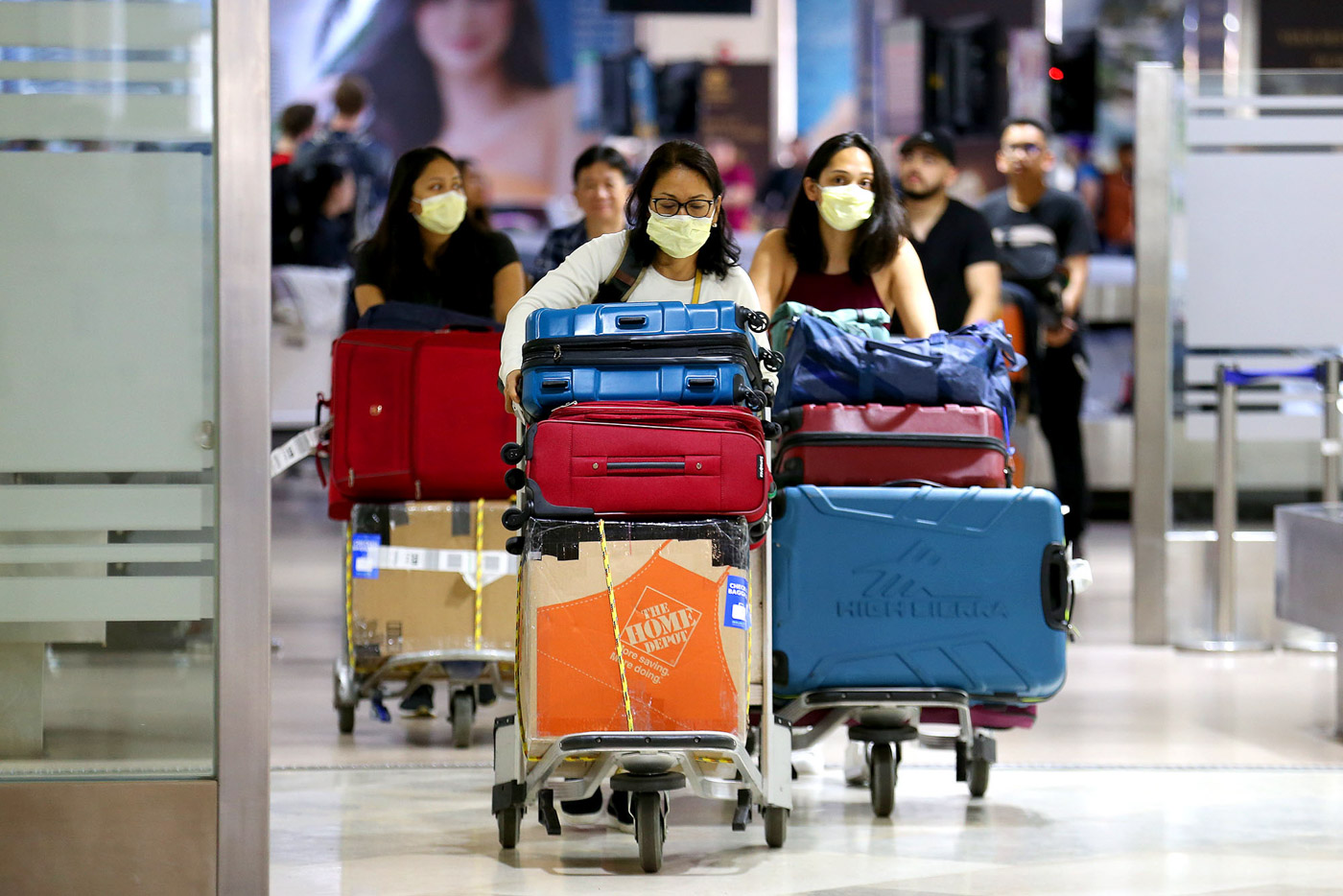
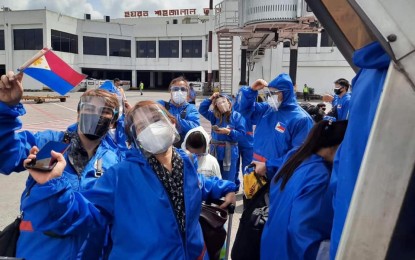
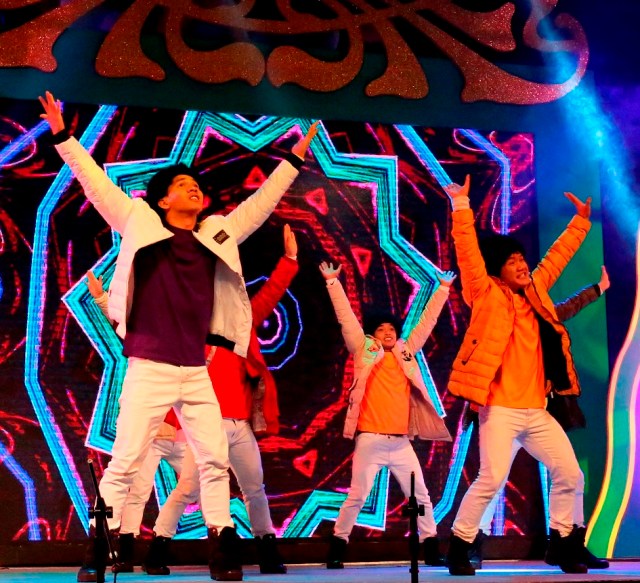
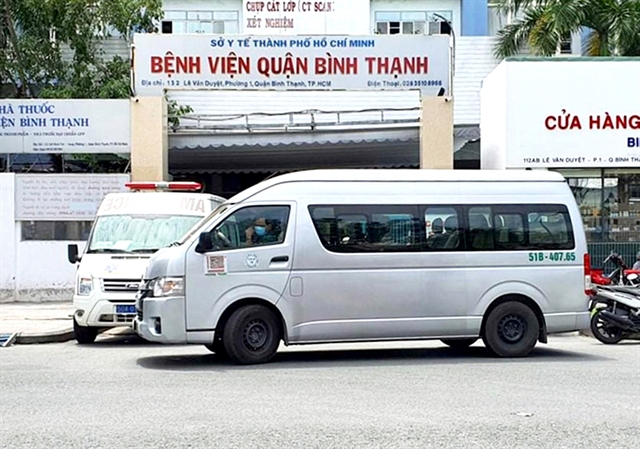
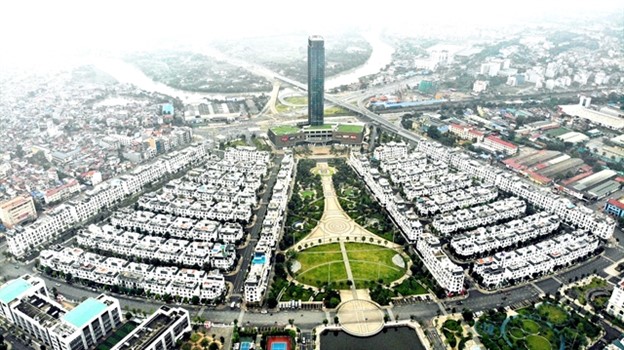



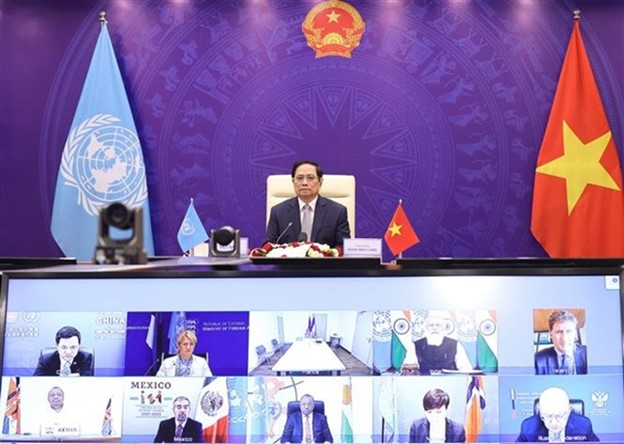
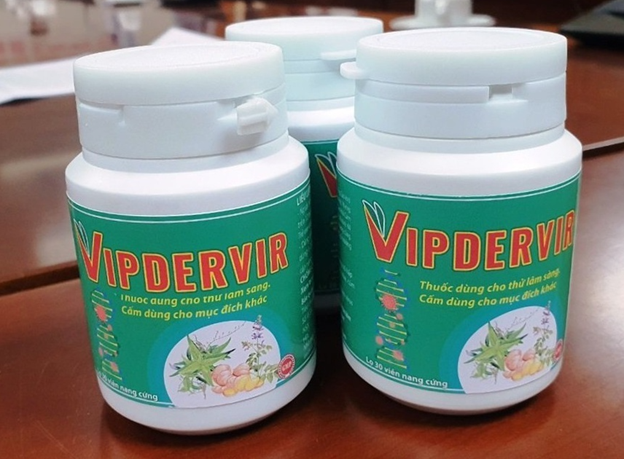
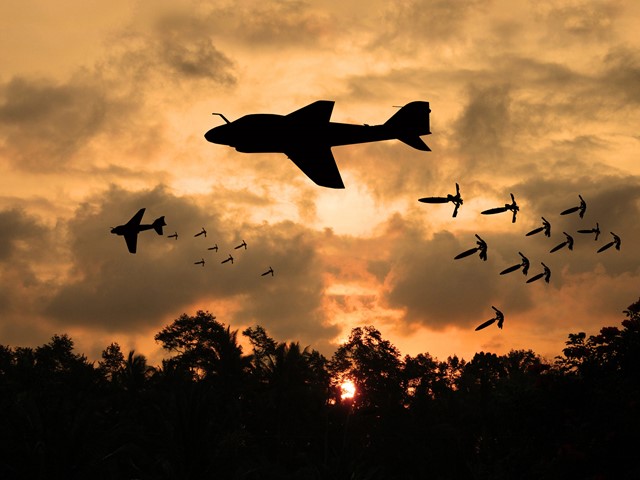
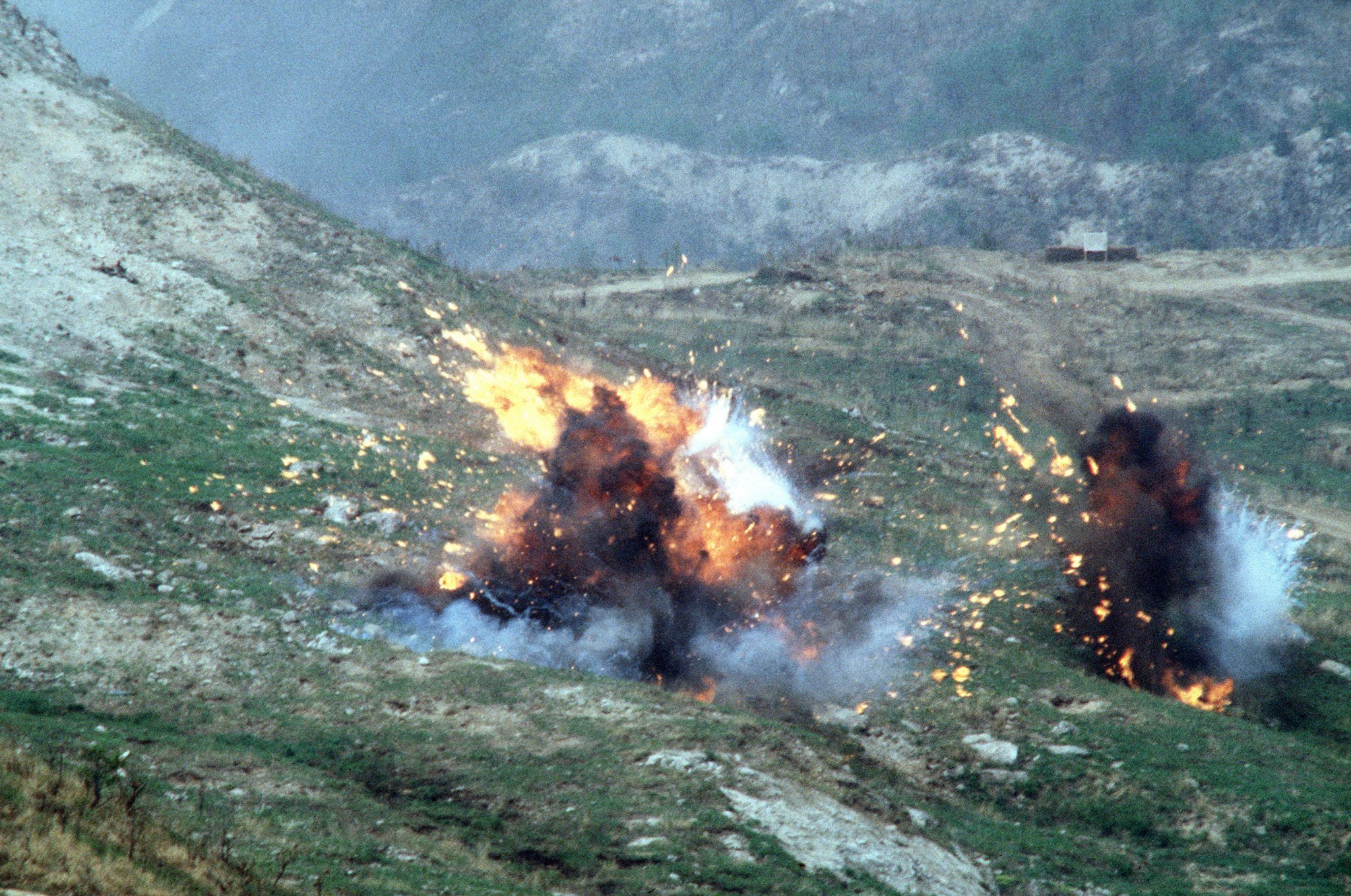
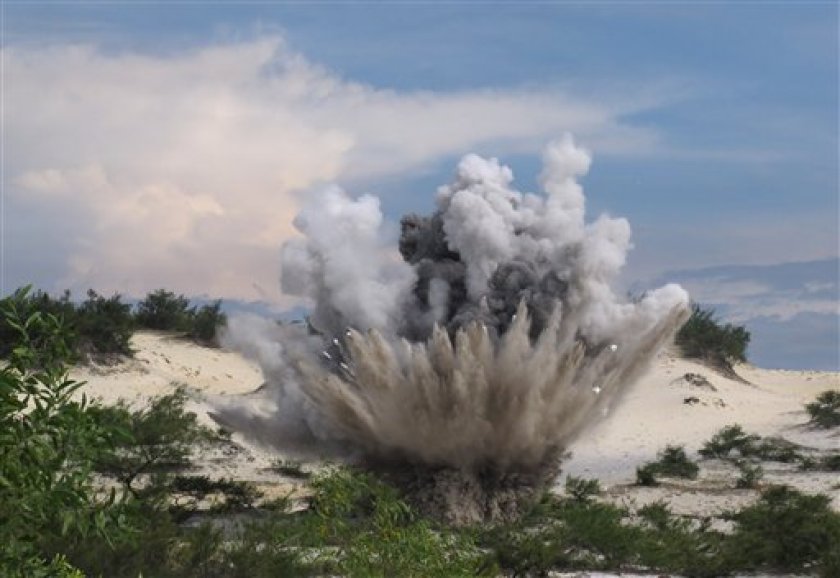

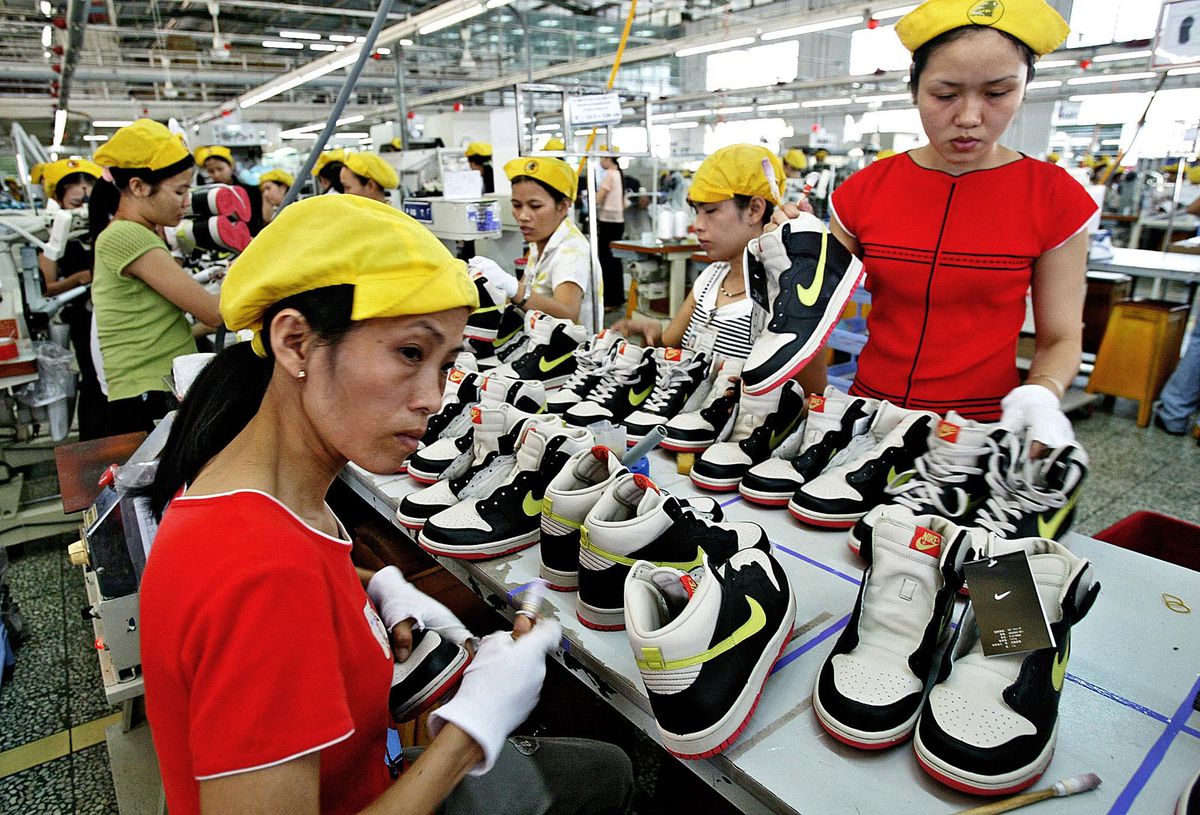


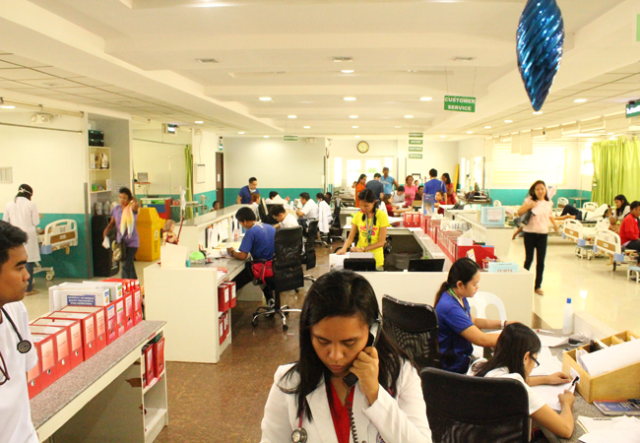
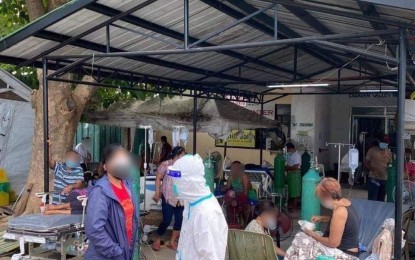

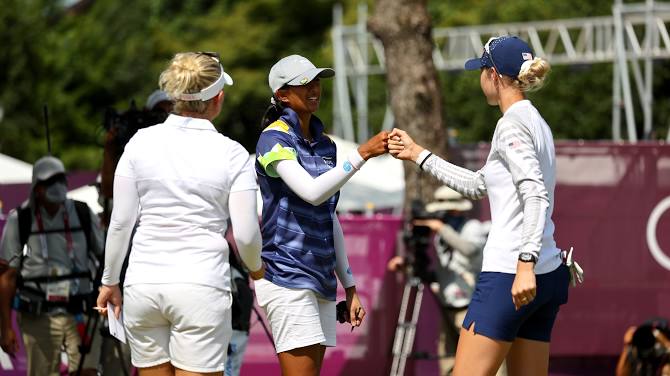

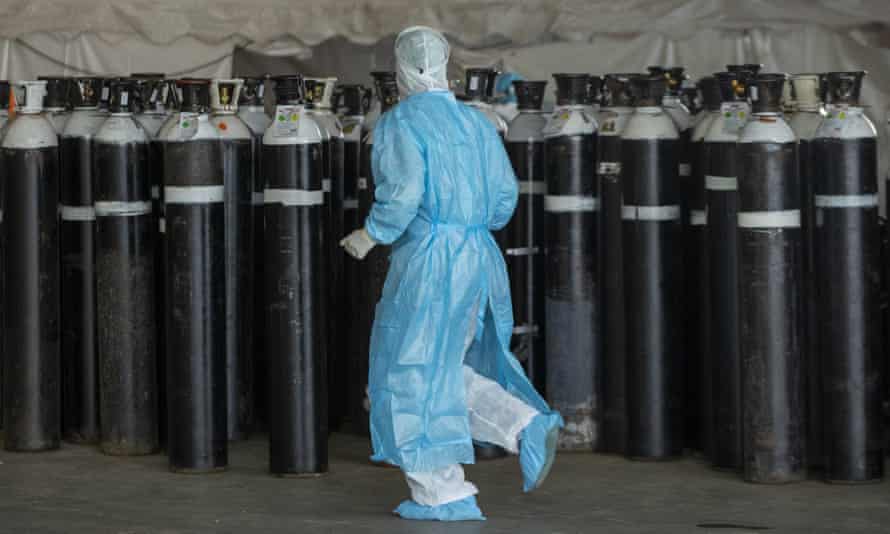
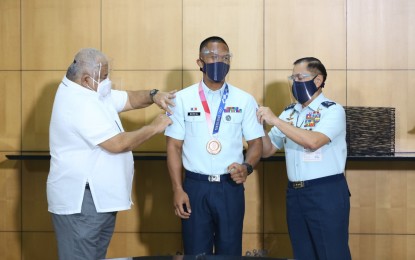
.thumb.JPG.3f3c2ca6269b723a0e3a1d259a1e5eb8.JPG)
